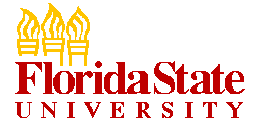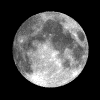
|
AST 1002 |
 |
![]()
| MAIN | SYLLABUS | SCHEDULE | ANNOUNCE | REVIEW | GRADES | AST LAB | LINKS |
![]()
Syllabus & Class Overview:
![]()
|
|
|
|
|
|
|
|
|
|
405 Keen |
(office)644-1576
|
| 2 |
|
(email)(web-page) | (message)644-2246 | |
|
south of Chemistry Dept's Dittmer Laboratory |
(office hours 1:30-2:30pm
Tu
and also by appt. at any |
& Th time) |
(home)893-6850
|
Text:
![]()
Objective:
To learn something about astronomy!! This course is intended to provide a general acquaintance with stars, planets, galaxies and their properties, and also an understanding of the techniques and tools used in astronomy. The class consists of lectures, planetarium shows, films, and demonstrations. These regularly scheduled lectures are used to emphasize the most important subjects, and will highlight material beyond the scope of the text, but are not intended to replace study of the text. I recommend that you read the relevant chapter in the textbook before the corresponding lecture to familiarize yourself with the material we will discuss, and thus make the time spent in class more profitable. Just having seen the words beforehand makes a big difference. You will be held responsible on the tests both for materials presented in the class lectures and in the text.You are expected to read assigned materials, to attend class regularly, and to learn the material presented in class. Attendance will not be taken in a formal way. However, frequent random mini-quizzes are given in the class and credit for attendance on quiz days is included as part of the quiz grade, which counts as 20% of your total grade. Poor attendance will have a negative effect on your course grade because of missed quizzes, and a significant number of misses .
As a liberal studies course, the goal of this class is not merely to emphasize facts, but, rather to build a comprehensive understanding of astronomy as a science, including its history, its tools of study, the structure and evolution of stars, and of the universe as a whole. The lectures may cover some topics not covered by the text, so we highly recommend class attendance and participation. we believe that this is an interesting course, and we hope you will find it both challenging and enjoyable.
Assignments:
No formal homework assignments will be graded for this class. However, the understanding of how to solve numerical problems is important to your understanding of how astronomers do their work. We highly recommended that you work through many of the numerical problems at the end of each chapter in the text. This work will not be picked up or graded, but a number of these problems will be reviewed in class, and numerical problems on the daily quizzes and on the tests will be similar, if not identical, to many of these end-of-chapter problems.
AST1002 Lab:
The AST1002L Introductory Astronomy Laboratory is a separate course that is graded and structured completely independently from this class. AST1002L, however, gives opportunities in using telescopes and other tools in observational astronomy that closely parallels the material presented in this course, and is thus of value to the students here. It is also a chance to get out and see the stars and other beauties of the heavens firsthand. Registration in AST1002L requires this course as a co-requisite, and is highly recommended for any students who are interested in seeing the stars.
![]()
Grade: The final grade in the course is based on:
Four one-hour-long tests (each counting 21% of the total grade),
class participation and randomly scheduled short answer quizzes (often, but not always given at the end of each class period, and in the summer sssion can be given more often than once per class), (which combine together to count 16% of the total grade), and
NO cumulative Final Exam is given during summer sessions ().
No test may be missed. The only test absences that will be accepted will require a doctors written excuse (or other equivalent documentation), and must be made up promptly by arrangement with the instructor. Any make-up exam will be an oral or other exam chosen by the instructor. To see your own current grades in the class, go HERE.
You are strongly encouraged to seek help from the instructor by: asking questions before, during, and after lectures, by coming to my office hours, by calling me on the phone, or by sending me email. DO NOT HESITATE TO ASK FOR HELP OR CLARIFICATION. I AM MORE THAN HAPPY TO HELP EACH OF YOU!
![]()
Some of the questions that we would like to delve into in this class:
| MAIN | SYLLABUS | SCHEDULE | ANNOUNCE | REVIEW | GRADES | AST LAB | LINKS |
Planets, Stars, and Galaxies
AST
1002
![]()
![]()
![]()
last
page home
next page
![]()
This page last updated on June
27, 2005 by David M. Lind
© 2005 Department of
Physics,
Florida State University. All rights reserved.
